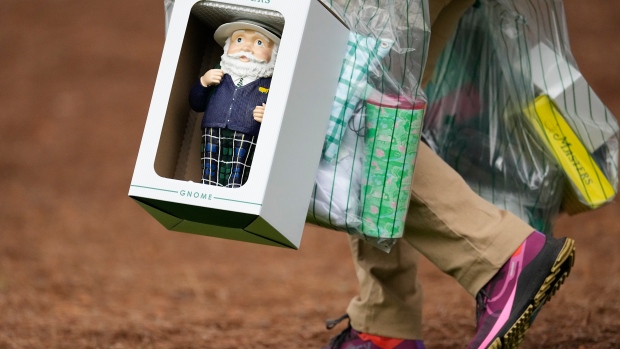Apr 11, 2024
Money Made at Masters is Under Par

Written by: Dan Gladman
Follow: @dgontheroad
While TV promotions remind us that The Masters Tournament is a tradition unlike any other, a deep dive into the legendary event shows that its business model is equally unlike any other.
The first of the four annual major golf tournaments, the Masters is played every year at Augusta National Golf Club, a private course in Augusta, Georgia, approximately 239 kilometres east of Atlanta.
In contrast to its brethren in golf’s majors - which include the U.S. Open, the PGA Championship and the Open Championship (British Open) - the Masters does not fully maximize revenue during the April week that it runs, and the reasons for this help maintain some of the shine and integrity of the event.
According to Forbes, the Masters generated $142 million USD at its 2022 edition but left another potential $269 million on the table.
Forbes quoted Peter Laatz, the global managing director of IEG: “Augusta National wants to keep the mystique and uniqueness surrounding the tournament in place, including keeping the course as pristine as possible.”
So, unlike other golf majors and tournaments, and literally all other professional sports, there is a lack of sponsorship signage on its field of play.
More dramatic is American TV money. Televised sports continue to boom in the U.S. and the Masters is no stranger to drawing in viewers, thanks to its unparalleled tradition, the sacred golf course and the collection of the sport’s stars that participate.
Jagwire, the news source of Augusta University, reported that coverage of the 2021 Masters on CBS peaked at 18.3 million viewers, when Hideki Matsuyama became the first Asian-born golfer to win.
16.25 million people in combined average viewership during a marathon Sunday that began with the conclusion of the third round watched in 2023, according to GolfDigest. Tiger Woods’ landmark victory at the 1997 Masters holds the all-time record for a golf telecast with an estimated 44 million watching.
Yet the Masters does not collect a fee for U.S. rights, choosing complete control of the broadcast instead. The tournament appears on CBS and ESPN, but the networks willingly relinquish their customary control. NBC pays $93 million per year for broadcast and production rights to the U.S. Open, itself a massive sporting event, but slightly less prestigious than the Masters. This suggests a whopping $100 million in rights fees is turned down every year by Augusta National.
Forbes writes that “Augusta has just six sponsors - AT&T, Delta, IBM, Mercedes Benz, Rolex and UPS - which split a minimalistic four minutes of commercial time per hour.
“Most of the sponsorship money goes directly to CBS and ESPN to cover the cost of production.”
So with TV money not part of the profit scheme, where does the revenue come from? A simple Internet search suggests that 35,000-40,000 people attend the four-day event, with an additional 10,000 attending during practice days earlier in the week. But even the price of admission is underpriced. Golf.com reports that a badge for the four days of competition this year is $450.
The same 4-day badge was selling for about $6,000 on StubHub last year, according to Forbes. "If Augusta charged half of secondary-market prices, badge revenue would jump to $185 million.”
Even food and drink is cheap. Golf Digest writes that “the concessions at the Masters are the stuff of legend, mostly for the cheap prices that don’t resemble any other sporting event.” The classic pimento cheese sandwich sells for $1.50. The mini-moon pie is one dollar. A cup of white wine is 6 bucks. Despite the affordable pricing, Forbes estimates the Masters still profits $8 million on concessions.

But the big windfall comes from event merchandise, potentially half of the tournament’s total revenue, according to Forbes.
Once again differing from major sporting events in America, and the world, Masters merchandise is only available at the event, and this week only. The scarcity has created an unassailable market for Masters golf shirts and hats. Forbes estimates revenue from merchandise hits nearly $70 million. It would be difficult to imagine anyone attending any day of Masters week and not buying at least a t-shirt or a hat. Most will buy items for friends and family as well.

The $18 million purse for the 2023 Masters was the largest prize money in tournament history, with Jon Rahm taking home $3,240,000 as the winner. That was a 20% increase from just the year before, and it may be more this year. The PGA Championship provides bigger prize money, but the Masters ranks second in that department, and nary a golfer has been known to complain.
Like the club executives and tournament organizers, the golfers themselves will give up a little bit of that big money to preserve the sanctity and integrity of golf’s mystical event. There is no buyer’s remorse at the Masters. Its devotion to quality and tradition is profitable in all the ways.